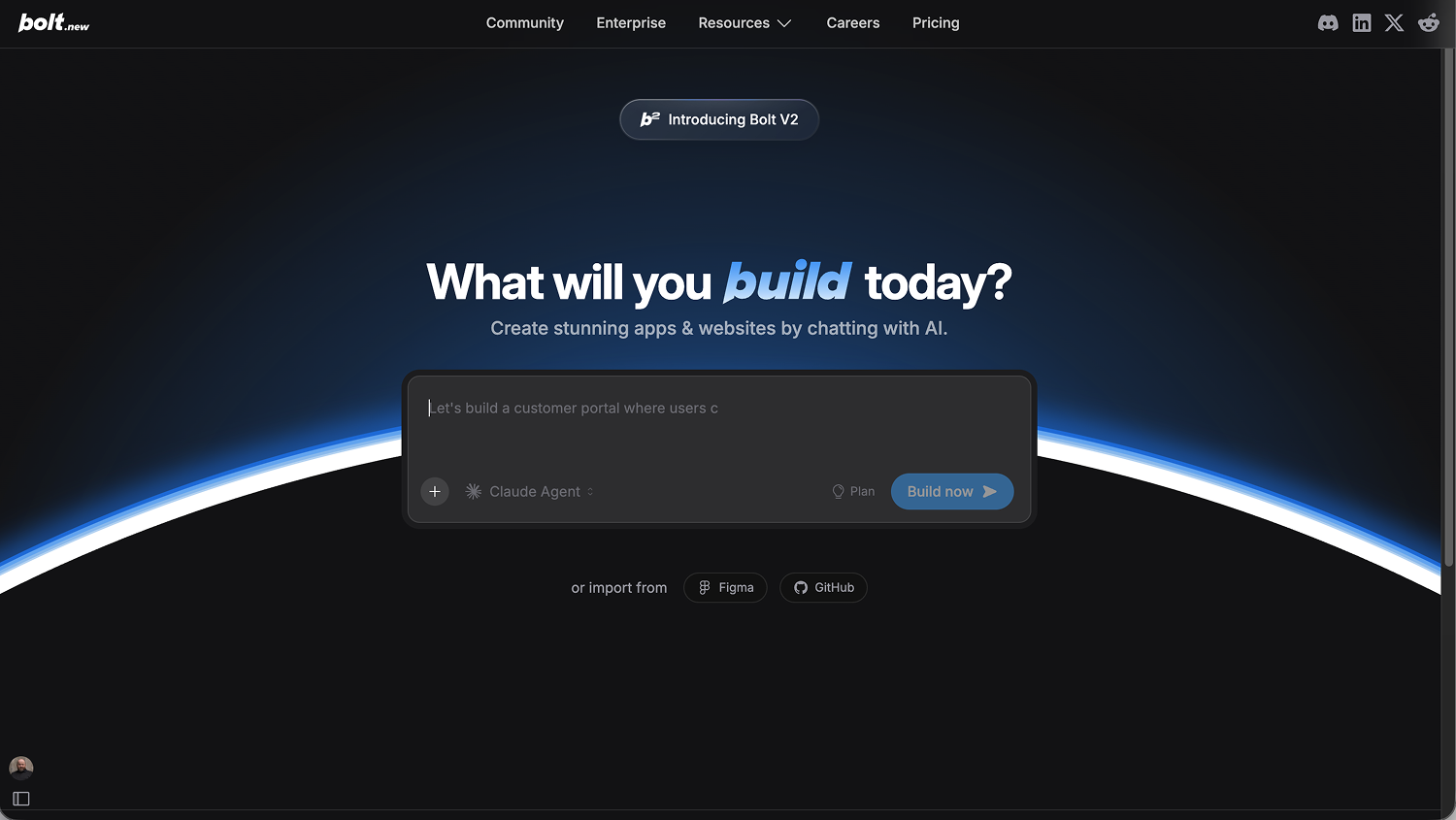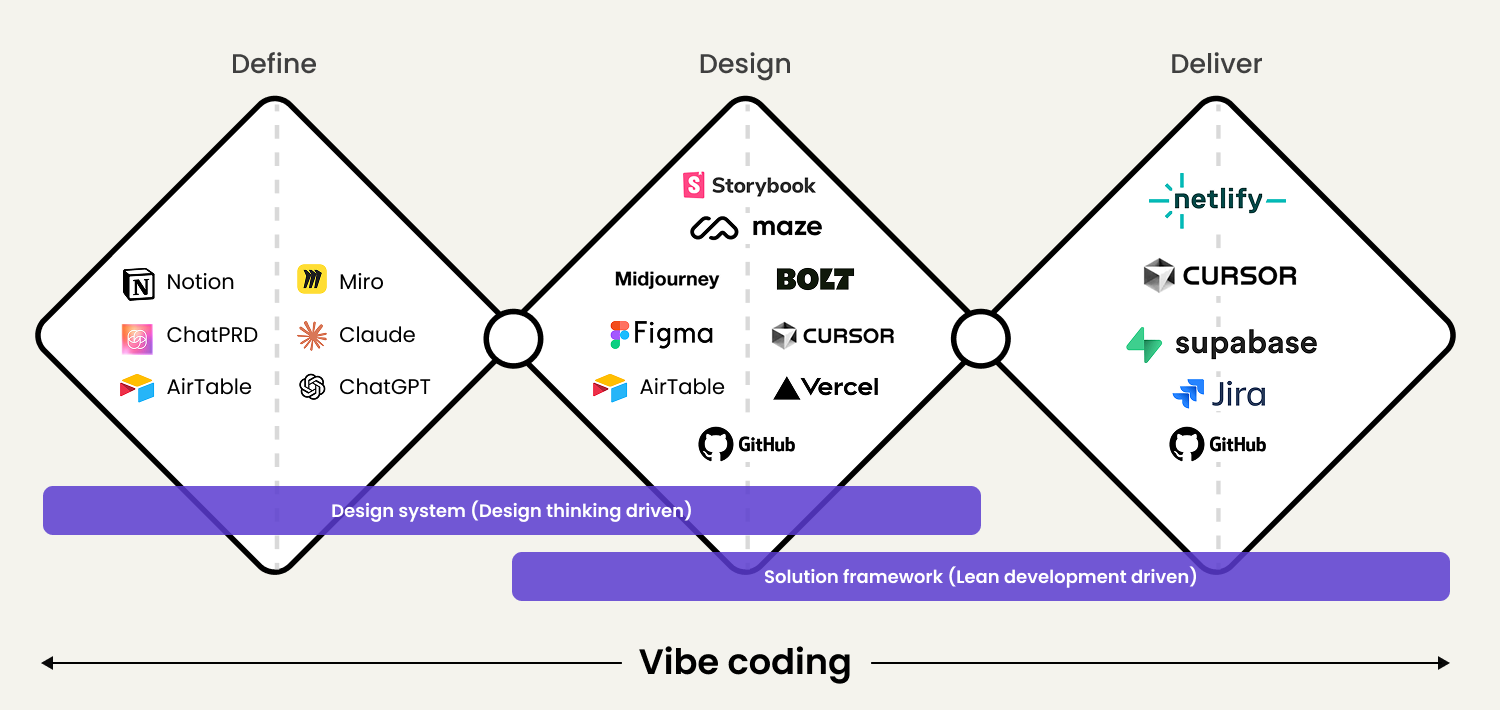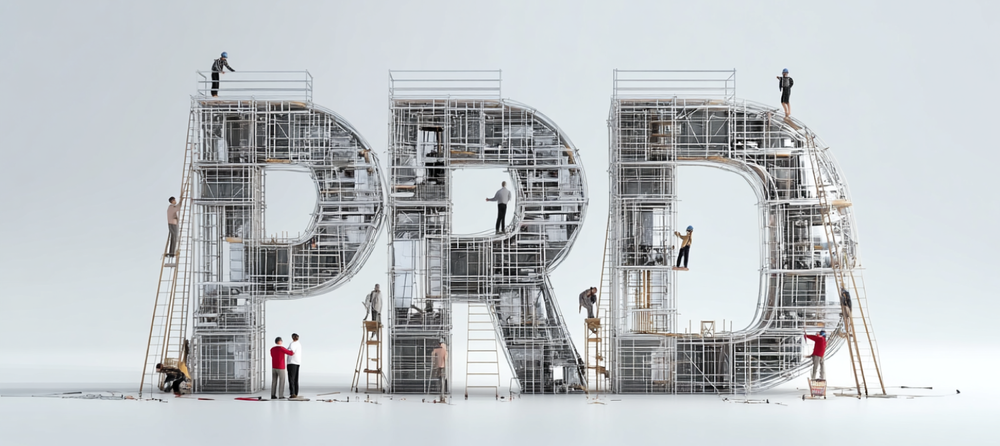The pace of innovation has never been faster. New tools, AI-driven systems, and user expectations evolve daily - making it essential for organisations to test, learn, and adapt quickly. Success is no longer defined by having the best ideas but by how effectively those ideas are validated, refined and scaled.
Over the last two decades, I have guided organisations in moving from strategic intent to operational proof through structured processes built around rapid prototyping and pilot programs. These approaches have enabled continuous validation, where user feedback from prototype engagement was used to inform every decision for improvements.
In the past, prototypes were often static representations of intent: wireframes, mockups or early-stage proofs of concept built in design tools such as Figma and Invision. They communicated a direction but rarely captured the dynamics of an authentic experience where the user could interact in multiple directions. It came with limitations, but we learned to narrow the scope, often creating "vertical simulations" due to the limitations of our tools and practice.
But now, the rules have changed. Welcome to the world of AI and vibecoding.
Vibe Coding - the new standard for rapid prototyping
AI has introduced a new layer in the innovation process: vibe coding - the intelligent middleware between ideas and reality.

Today, AI enables teams to create realtime living prototypes - functional, data-driven simulations that behave like production systems, long before a single line of backend code is written. It looks and feels like the real thing!

Vibe coding connects creative vision with technical feasibility. It allows strategists, designers and developers to work in the same space, co-creating systems that can be tested, refined and validated in real time. The result: shorter feedback loops, more substantial cross-team alignment and a direct bridge from design intent to pilot-ready functionality.
In short, vibe coding is no longer an experiment on the side. It’s the new normal.
82 % of developers use AI-coding tools daily
74 % report increased productivity, yet 63 % have spent more time debugging AI-generated code
25 % of companies using gen AI will implement agentic AI pilots in 2025
Ref: Mark Tech Posts & The New stack
The Importance of Prompt Engineering
In today’s AI-driven work, the prompt has become the new project brief. What you write to an AI determines the quality of what you get back. If the prompt is unclear, the result will be confused. If the prompt is structured and specific, the result will be focused, fast and valuable.
When using vibe coding platforms, prompts act as middleware between your ideas and the prototypes or pilots they produce. The more precise and detailed your instructions, the closer the AI output will match what you actually need.
Why a Clear project brief matters
Before writing any prompt manually, you need a short, structured project brief — sometimes called a PRD (Product Requirements Document) — to guide your vibe coding platform.
In traditional product work, a PRD aligns teams around what to build and why. In vibe coding, it performs the same role - but for humans and AI systems working together. It provides the AI with the strategic context needed to generate meaningful, accurate prototypes, rather than random outputs.

Modern tools such as ChatPRD make this process even easier. They translate a written PRD directly into AI-ready instructions — for example, telling Bolt.new exactly what to build, for whom, and under which conditions. This ensures that the AI builds within real business goals and user constraints, rather than relying on creative guesses.
A good PRD defines:
- What do you want to achieve
- Who it’s for
- Why it matters
- What success looks like
This turns vague goals like “make it better” into testable, measurable statements such as “reduce onboarding steps from five to three”. Without this foundation, even the most advanced AI tools start to rely on guesswork - and the quality of both the prototypes and future pilots drops dramatically.
In short: The PRD is your translation layer between strategy and AI execution - the foundation that keeps every vibe-coded prototype aligned, measurable, and grounded in purpose.
Why prompt engineering skills matter
A clear prompt saves hours of rework. It aligns teams, clarifies goals and helps everyone see progress faster. In vibe coding, prompts transform ideas into living prototypes, giving leaders and teams real results they can see, test and improve.
Prompt engineering isn’t technical - it’s about thinking clearly and communicating precisely. When you do that, AI becomes your most reliable co-creator.
How to get started
Getting started with vibe coding begins with a simple mindset shift - from planning to experimenting. Instead of building long specifications or waiting for full design approval, teams start by translating intent into working prototypes that can be tested, measured, and evolved immediately.
Every prototype is a conversation with reality - it reveals what works, what doesn’t and what truly matters before anything is built. The key is momentum: create something tangible fast, validate it early, and refine through continuous feedback.

Here are some principles to consider:
- Prototype behaviour, not pixel-perfect design
Focus on how the system acts, not just how it looks. Use AI to simulate logic, interaction, and user flow - bringing the experience to life early in the process. - Start small, learn fast
Start with narrow use cases that provide the most insight with minimal effort. Early validation beats long preparation - every iteration brings clarity. - Keep everything reusable
Treat prototypes as building blocks, not throwaways. Structure your vibe-coded assets to evolve into pilots or production code with minimal rework. - Let AI handle the repetition
Use generative and predictive tools to automate what slows you down - layouts, content, or data states - so the team can focus on creativity, logic, and value. - Build a continuous feedback loop
Every prototype is a conversation with reality. Capture data, learn from it, and adjust. Make feedback an integrated part of the process, not a final step.
“Every prototype is a conversation with reality — it reveals what works, what doesn’t, and what truly matters before anything is built.” - Andreas Markewärn
Why It Matters
Traditional prototyping was about illustrating an idea.
Vibe coding is about experiencing it.
By turning abstract concepts into working systems early, organisations can now test feasibility, usability, and market potential simultaneously. This dramatically increases learning speed and reduces the cost of iteration - transforming innovation from a linear process into a living, adaptive system.
With AI as the enabler, the line between design and production has blurred. What used to take months can now be done in weeks - or days - while maintaining creative control and technical precision.
The New Operating Model
In this new environment, vibe coding functions as middleware - connecting:
- Strategy and execution
- Design and engineering
- Human intent and AI capability
It provides multidisciplinary teams with a shared environment to collaborate, think, test, and build together. This approach fosters a new type of organisational agility - one where creativity, analytics, and technology evolve in sync.
For leaders, it means moving from managing projects to orchestrating learning systems. Every prototype becomes a data asset. Every pilot becomes a growth opportunity.
Closing Thoughts
AI has completely changed the rules of rapid prototyping. What used to take weeks of planning, approval, and manual work can now happen in days — or even hours - through vibe coding. But speed alone doesn’t create value. Structure does.
A clear PRD, strong prompts and a rhythm of continuous testing turn AI from a creative spark into a reliable execution partner. Together, they create a workflow where ideas evolve naturally into validated prototypes and pilots - fast, consistent and grounded in measurable outcomes.
As we move deeper into 2025, one thing is clear: vibe coding isn’t just a new method - it’s the new standard. And those who master the balance between clarity and creativity will define how innovation happens next.
Related services
Do you need help in your transformation journey using Prototyping, Vibe coding & validation pilots? My services can be tailored to meet your specific situation and needs. Read more about my services in the link below.








